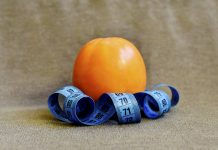This ball is also called a medicine ball. It is for good reason, since it can be used to solve many health problems. In fact, it is a stuffed ball, which means that it is not inflated with air, is rather heavy in weight if to compare it with a usual gymnastic ball. You should see from your own experience that a medicine ball is a must-have item for home workout.

The diameter of a medicine ball is typically about 13.7 inches, but its weight may be completely different. The stores most often sell stuffed balls weighing from 3 to 6 kg (the weight is chosen according to the level of training), but in general, the range is much bigger – 2-25 lb (0.91-11 kg). Medi exercise balls are covered with leather or vinyl. The materials for stuffing may be different (depending on the weight of the ball). This can be sand, steel shot, rubber, polyurethane, polyvinyl chloride. This ball does not “jump” and is well kept in hands. But there are also more convenient options with handles.
The ball is called “a medicine ball”, since it was designed by doctors for rehabilitation of patients and for use in sports medicine to increase the loads of professional athletes.
Abs and Hips Exercise, or “Russian Twist”
- Sit on the floor with your knees bent and heels approximately 30 cm from the buttocks.
- Lean back a bit with your back kept straight. Make sure that the spine is straightened.
- The ball is in your hands. Stretch your arms forward with the ball, they should be at the bottom of the rib cage.
- Pull your stomach in and slowly turn to the left or right. The movement should not have amplitude, and twisting starts from the ribs, and not the hands. Then return to
- the starting position, inhale and twist the other way.
A more advanced version is to keep the feet off the ground. Do 15-20 twists in each direction.
Woodcutter Exercise with a Medi Ball
- It is a good exercise for the waist, as well as for slim thighs.
- Stand with your feet shoulder width apart, the knees can be slightly bent.
- The ball is in your hands, and the hands are bent at the elbows. Lift the ball to the left shoulder.
- Pull in your stomach.
- While exhaling, move the ball diagonally to the right knee. The movement should be fairly sharp, as if you had an ax in the hands to chop firewood.
- You should twist only with the help of the body, not involving the knees.
- Move the ball back to the starting position. This completes one cycle of the exercise.
Move with force, but control the balance. Do three sets, 15 repetitions each time.
Lunge with Medicine Ball
Using a medicine ball while doing this exercise adds power load. The exercise is good for the muscles of buttocks and thighs.
- Keep the upper part of your body straight, the shoulders should be moved back and relaxed. The chin “looks” ahead, as you choose some point ahead of you and look only at it to keep your head in the right position. Hold the ball in your hands in front of the chest, with your elbows bent.
- Step forward with your right foot, dropping the hips until both legs are bent at the angle of about 90 degrees. Make sure that your right knee is directly over the ankle and does not move too much forward. The knee of your left leg should not touch the floor.
- Twist the body to the right, also moving your hands and the ball to the right. The knees should not turn, everything you twist is the chest.
Straighten up to the starting position.
Do 10 repetitions on each side.
Pushups with a Medicine Ball
This is a funny exercise for almost all muscle groups.
- Take the pushup position. If you find it difficult at first, you can always get some additional support, if you stand on your knees, and not the toes.
- Put the medicine ball next to your right hand. Place your right hand on the ball and do one push-up.
- Now, try to roll the ball with your right hand to the left, to the left shoulder.
- Place your left hand on the ball and do one push-up again.
Do 5-7 push-ups with a ball for each hand.
Medicine Ball Workout Precautions
- Finally we should say a few words about safety precautions when working with a stuffed ball:
- Do not unbend hands and knees completely when working with a heavy ball.
- The back should always be straight in order to avoid injuries.
- The greater the distance between the ball and the body is, the more force the exercise requires. Beginners are not recommended to take the ball away from the body, so as not to strain their muscles. On the contrary, if you want to make the exercise more complicated – just try to keep the ball at a remote distance from the body.










